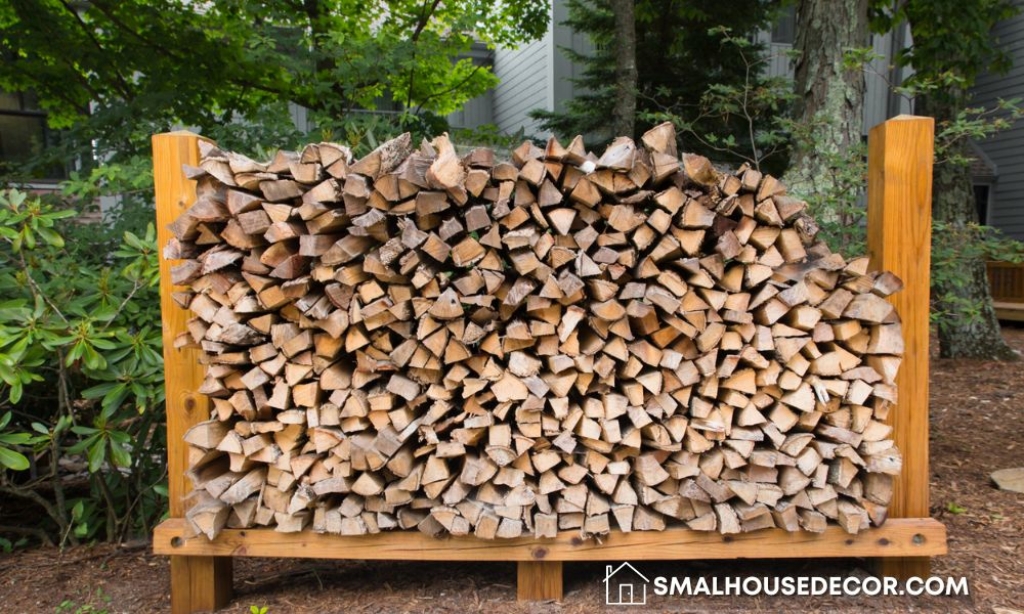When it comes to keeping your home warm and cozy during the colder months, firewood can be an essential resource. But collecting and managing firewood can be a daunting task, especially if you’re new to it. However, with the right techniques and tools, you can efficiently collect and manage firewood for your house without breaking a sweat.
From selecting the right type of wood to using the proper tools for cutting and splitting, there are several factors to consider when it comes to firewood collection and management. In this blog post, we’ll explore some helpful tips and tricks to help you collect and manage firewood like a pro. Let’s get started.

Find a Reliable Firewood Supplier
The first step in collecting and managing firewood for your house is to find a reliable supplier. Depending on your location, there may be several options available, including local firewood dealers or online marketplaces. As highlighted by the team behind Sherman Outdoor Services, the dealers will typically deliver and stack the firewood for you. When selecting a supplier, take into account factors such as cost, quality of wood, delivery time, and customer service.
Look for suppliers who sell seasoned or kiln-dried firewood, as this type of wood burns more efficiently and produces less smoke and creosote buildup in your chimney. Additionally, make sure the supplier follows sustainable and ethical harvesting practices to protect the environment and ensure a consistent supply of firewood for future generations.
Use the Right Tools for Cutting and Splitting Firewood
Once you have a reliable source of firewood, it’s time to start cutting and splitting it into manageable sizes for your fireplace or wood stove. This process requires the right tools to ensure safety and efficiency. The two primary tools you’ll need are a chainsaw for cutting the wood into logs and a splitting maul for splitting the logs into smaller pieces.
When choosing these tools, consider their weight, handle length, and blade sharpness. Invest in safety gear such as gloves, safety glasses, and steel-toed boots to protect yourself from injuries while working with sharp tools. Using the right tools will help you collect and manage firewood more efficiently and safely.
Seek a Storage Location Close to Your Home
Once you have cut and split your firewood, you need to store it properly to ensure it stays dry and ready to use. When choosing a storage location, consider its proximity to your home. You want to keep the wood as close as possible to your house to minimize the distance you have to carry it and reduce the risk of damage to the wood from exposure to the elements.
A covered area, such as a shed or garage, is ideal for storing firewood. Make sure to stack the wood to allow for proper air circulation and to cover the top with a tarp or other waterproof material to protect it from rain and snow.
Also Read: Best Smallest Pellet Stoves for Your Home
Stack Pieces With Spaces to Enable Airflow
Proper stacking is crucial for storing firewood. When you stack firewood, you should create gaps between each piece to allow for proper airflow. This will help the wood dry out and reduce the risk of mold growth or decay. The recommended gap size is around 2-3 inches, depending on the size of the logs.
You should also stack the wood in a criss-cross pattern, alternating the direction of the logs with each layer. This will create a stable stack that won’t topple over. Additionally, make sure to stack the wood in a covered area to protect it from rain and snow. Proper stacking will help you store firewood effectively and ensure it’s ready to use when you need it.
Do Not Overstock Firewood
It’s essential to balance having enough firewood on hand and avoiding overstocking. While it may be tempting to collect and store as much firewood as possible, overstocking can lead to problems such as pest infestations, mold growth, and decay.
Additionally, if you store too much wood, it can take a long time to dry out, which can reduce its quality as a fuel source. A good rule of thumb is to store no more than a year’s worth of firewood at a time. This will give you enough wood to last through the winter but not so much that it causes problems with storage or quality.
Also Read: Firewood management is only part of the equation—how your fireplace and chimney utilize that wood is equally important. Dive into the Parts of a Fireplace & Chimney to understand the essential components that optimize firewood combustion and ensure safe operation.
First In, First Out
When it comes to using your stored firewood, it’s essential to follow the “first in, first out” principle. This means using the oldest firewood first and leaving the newer wood to dry out further. Using the oldest wood first ensures that none of your firewood goes to waste due to decay or rot.
Additionally, older wood is typically drier and burns more efficiently, reducing the amount of smoke and creosote buildup in your chimney. By following this principle, you can ensure that your stored firewood is used effectively and efficiently, providing you with a reliable source of heat for your home throughout the winter.
Collecting and managing firewood for your house can be a satisfying and cost-effective way to keep your home warm and cozy during the colder months. By following these tips and tricks, you can efficiently collect, cut, store, and use firewood like a pro. Remember to find a reliable supplier, use the right tools, stack the wood with spaces for airflow, avoid overstocking, and follow the “first in, first out” principle. These techniques allow you to enjoy a warm and cozy home while practicing sustainable and responsible firewood management.